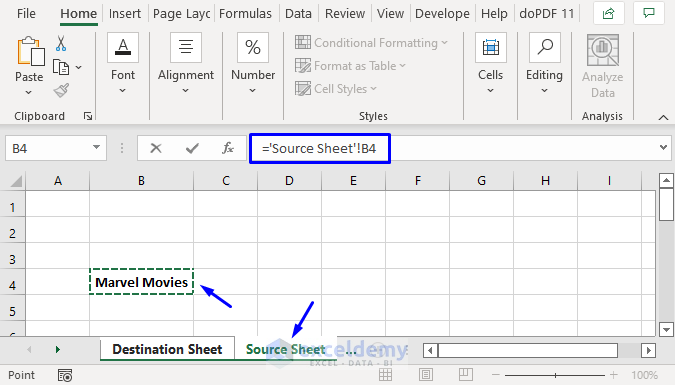Link Excel Sheets 2013: Ultimate Guide

Linking spreadsheets can transform a complex set of data into an organized, easy-to-navigate system, enhancing productivity significantly. This guide will cover various methods to link Excel sheets using Excel 2013, ensuring you can harness the full potential of this robust software. Whether you're merging data from multiple files, updating numbers automatically, or simplifying complex workflows, understanding Excel linking is crucial.
Understanding Cell References

Before diving into linking methods, it’s essential to grasp how Excel handles cell references:
- Relative References: References that change when copied to another cell. For instance, if you copy the formula “=A1” from cell B1 to B2, it changes to “=A2”.
- Absolute References: Uses to lock a reference to a specific cell, e.g., A1. This ensures the reference remains the same even if you copy or move the formula.</li> <li><strong>Mixed References:</strong> Combines both relative and absolute, like A1 or A$1, where either the row or the column remains constant.

Linking Within the Same Workbook

Linking cells within the same workbook can streamline your workflow:
- Select the Cell: Click the cell where you want the linked data to appear.
- Enter Formula: Type
=, then click the cell you want to link to, or manually type the cell reference, e.g.,=Sheet2!A1. - Press Enter: The formula calculates, and the linked value appears.
If you need to reference a cell from a different sheet:
- Use a formula like
=SheetName!CellReference. Replace “SheetName” with the sheet’s name and “CellReference” with the cell address, like “=Data!B5”.
Linking Between Different Excel Files

Linking data from different Excel workbooks allows for:
- Seamless updating across files.
- Data consolidation from multiple sources.
To link external workbooks:
- Open Both Files: Have both the source and destination workbooks open.
- Select Cell: Click where you want the linked data to appear.
- Enter Formula: Type
=, navigate to the other workbook, select the cell or range you want to link, and press Enter. The formula will look something like: - Save and Close: Save both workbooks, then try closing the source workbook to verify if the link works.
=‘[SourceWorkbook.xlsx]SheetName’!CellReference
Linking to Named Ranges

Excel’s named ranges can make linking cleaner and more manageable:
- Define a Named Range: Select a range, go to Formulas > Define Name, and give it a name like “MonthlySales”.
- Link to the Named Range: Type
=, then select the named range from another cell or sheet. The formula will read something like:
=MonthlySales
📌 Note: Named ranges are useful for data that will frequently change or need to be referenced repeatedly.
Advanced Techniques for Linking Sheets

Here are some advanced ways to link Excel sheets:
- Dynamic Data Exchange (DDE): For real-time data linking between different software applications.
- Database Query: Use SQL queries within Excel to fetch data from external databases and update cells dynamically.
- VBA for Custom Linking: Create custom VBA scripts to manage complex linking scenarios or automate updates.
Managing Links in Excel

Excel provides tools for managing links:
- Break Link: To remove the connection between workbooks, go to Data > Edit Links > Break Link.
- Update Links: To refresh linked data, use Update Values in the Data tab.
- Change Source: If a source workbook moves or gets renamed, update the source location via Change Source.
In summary, linking sheets in Excel 2013 can significantly enhance your ability to manage, analyze, and present data. Whether you’re linking cells within the same workbook or pulling data from different workbooks, Excel offers various methods to ensure your data stays current and accurate. Key points include understanding cell references, using relative, absolute, and mixed references appropriately, and employing named ranges for clarity and ease of maintenance. Advanced techniques like DDE, database queries, or VBA can unlock even more powerful ways to link data, ensuring your Excel work remains dynamic and efficient.
What happens if the source workbook is moved or renamed?

+
If the source workbook is renamed or moved, Excel will display an error when trying to access the link. You’ll need to update the link’s source path through the ‘Change Source’ option in the ‘Data’ tab.
Can I link multiple ranges from different sheets in one cell?

+
Yes, you can use the CONCATENATE function or “&” operator to combine data from multiple linked cells into one cell.
Is there a way to prevent accidental breaks in links?

+
Excel does not have a built-in feature to prevent links from breaking. However, maintaining good file organization and regularly updating links can mitigate this risk.